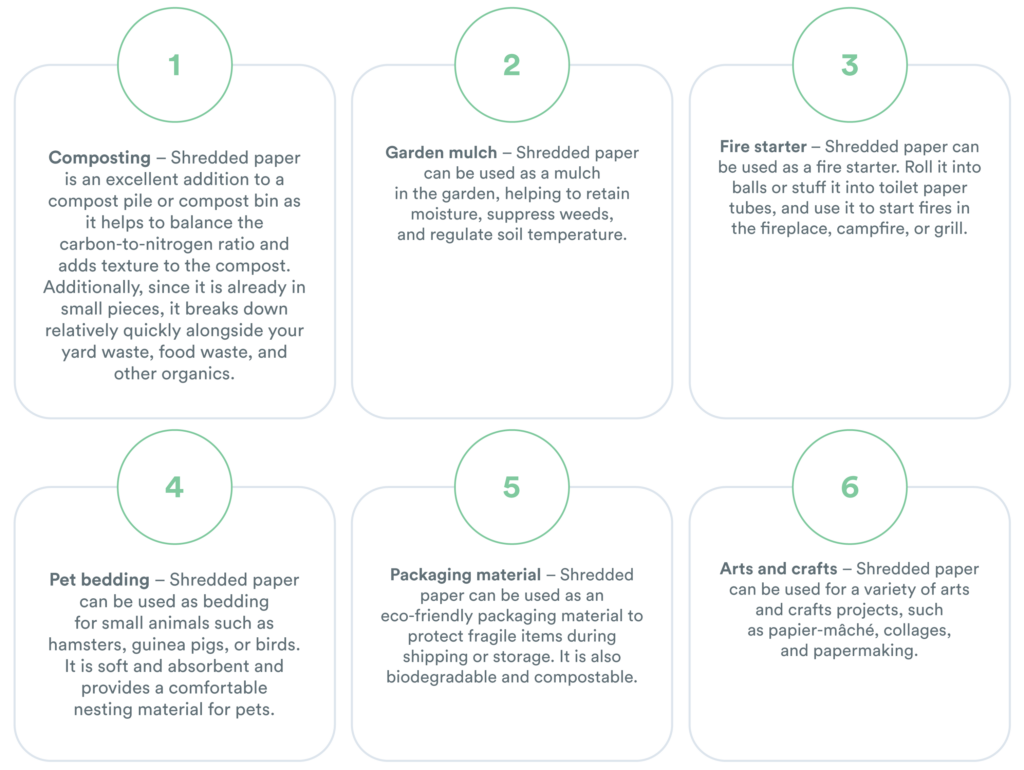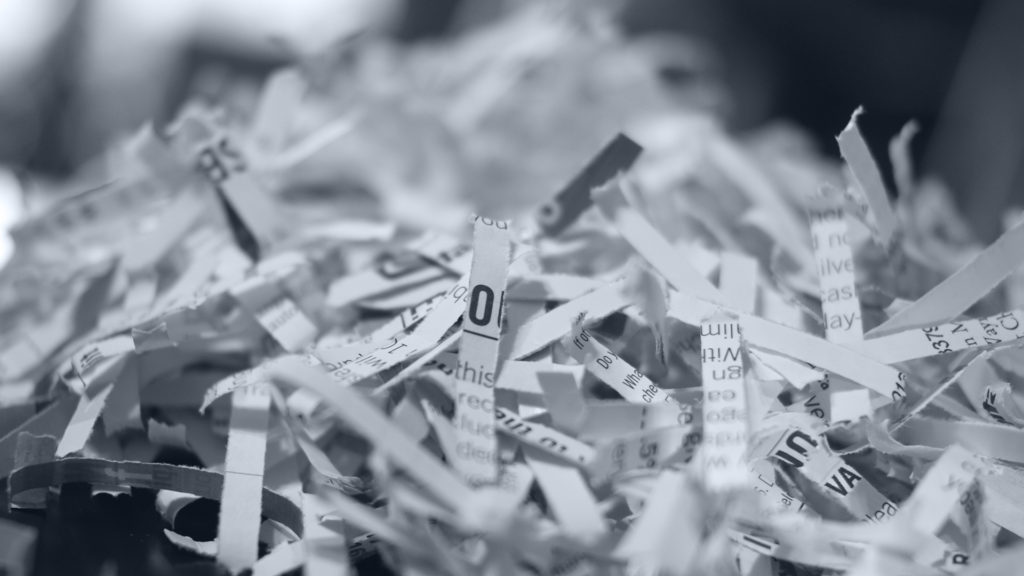As a fully recyclable material, paper is among the most common solid waste items sent to recycling facilities. However, when it comes to shredded paper, there are a number of issues that make recycling problematic, and understanding what can be recycled, as well as the reasons paper is shredded in the first place, is key to ensuring it is kept out of landfill.
Here then, we explore everything about paper shredding in our recycling guide. Read on to learn more about how to increase your sustainability and ensure your data is kept safe.
Facts about Shredded Paper
The first paper shredder patent dates to 1909, but unfortunately the inventor Abbot Augustus died before he got to witness it in action. Next, a machine designed by Adolf Ehinger in 1935 was created with the sole purpose of shredding thousands of anti-Nazi propaganda documents before they could be discovered by the secret police. By the 1980s, shredding paper products in offices was big business, with many well-known brands entering the market to provide accessibility to shredding services and equipment for any type of valuable information. Other facts include:
- Discarded paper is classed as public property in the US, so shredding vital documents is a critical element of data protection.
- Paper shredding is a large industry since it is often mandated by law and required compliance for companies who hold sensitive information.
- A number of shredding companies exist that can either shred documents onsite or offer collection services where paper is shredded at a secure site.
- Industrial paper shredders at recycling centers are far larger and more destructive than those in your home or office.
- Recycling programs that will securely box and ship your valuable data for recycling are also available.
Why Recycle Shredded Paper?
As with all paper products, recycling shredded paper allows us to keep materials in the loop, rather than sending them to landfill where they cause multiple issues. Shredded paper that has been recycled can be reused as new paper products, although generally these products are of a lower quality than the original material as paper fiber degrades after processing.
Today, many organizations use paper shredding as a method of protecting valuable information, turning documents into strips of paper to make them all but illegible. However, there are those out there with the patience and motivation to reconstitute those pieces in order to extract valuable information that can be used against an organization.
Add this to the fact that shredded paper can pose a recycling issue, and it becomes clear that the correct processing, management, and disposal of office documents should be at the forefront of any eco-conscious organizations planning.
While the recycling process does in fact use a type of shredder to literally cut down larger sheets to size, there are numerous issues with shredding paper products, both at home and in the office, when considering collection by the municipality. These involve the potential for mixed materials entering the waste stream and contaminating recycling bins as well as criminals accessing sensitive information.
Recycling paper through secure recycling programs is a good way to increase security, since as soon as sensitive documents are shredded, they can immediately be sent for recycling where any contained information is destroyed in the recycling process. However, there are other ways to recycle shredded paper.
How to Recycle Paper Shredded Properly
Unfortunately, there can be issues with shredded paper when it comes to recycling, particularly when considering curbside pick-ups from recycling containers. Many municipalities will not accept shredded paper at all, so it is important to check before you add it to your usual recycling cart.
Those municipalities that do accept shredded paper will often ask that it is contained within a bag, separated from the rest of your paper products. This not only helps recycling centers to streamline the sorting process and avoid potential clogging of recycling machines, but also ensures it does not leave recycling containers and litter the streets. Using a paper bag or a cardboard box is generally preferable to using single-use plastic bags.
Additionally, you can also look for a local drop-off center, and many communities have dedicated facilities with designated bins or containers where individuals can deposit shredded paper. Once it has been properly deposited, it is usually taken to a specialized recycling facility where it can more easily be processed into new paper products.
Other Uses for Shredded Paper
If shredded paper recycling services are unavailable or difficult to access in your area, there are plenty of other options for you to reuse or recycle a variety of different types of paper at home.

Despite the challenges surrounding shredded paper, recycling it is an important step in reducing waste, promoting sustainability, and protecting data. For more information on recycling shredded paper generated by your business, contact a member of the RTS team today for a free waste assessment and stay tuned to the blog for insights into the recycling industry.
Frequently Asked Questions
Why Is It Difficult to Recycle Shredded Paper?
Shredded paper is difficult to recycle because the paper fibers are shortened during the shredding process. Short fibers are weaker than longer fibers, and they can break apart more easily during the recycling process. This makes it challenging for paper mills to use shredded paper in the manufacturing of new paper products.
Additionally, shredded paper tends to be more compact, making it difficult for recycling facilities to sort and separate from other materials in the recycling stream.
Can I Compost Shredded Paper?
Yes, you can compost shredded paper. Shredded paper can be a valuable addition to a compost pile, as it provides carbon-rich material that helps balance the nitrogen-rich material in the compost. However, it’s important to note that some types of paper, such as glossy or colored paper, may contain harmful chemicals that can harm the composting process or the plants grown from the compost.
Where Do I Take Shredded Paper to Be Recycled?
If you have shredded paper that needs to be recycled, you can contact your local recycling center or waste management facility to see if they accept it. Some recycling centers may require you to bundle the shredded paper in a paper bag or box before dropping it off.
What If I Need to Shred My Old Documents?
If you need to shred your old documents, you can purchase a shredder for personal use or take them to a professional shredding service. Many office supply stores, shipping centers, and document management companies offer shredding services for a fee.
RTS Has a Solution for Shredded Paper Recycling
RTS (Recycle Track Systems) is a waste and recycling management company that offers a solution for shredded paper recycling. In addition, secure shredding services for businesses and organizations and are available to protect data. If you are a business or organization that generates a large amount of shredded paper, contact us today to discuss your requirements.

